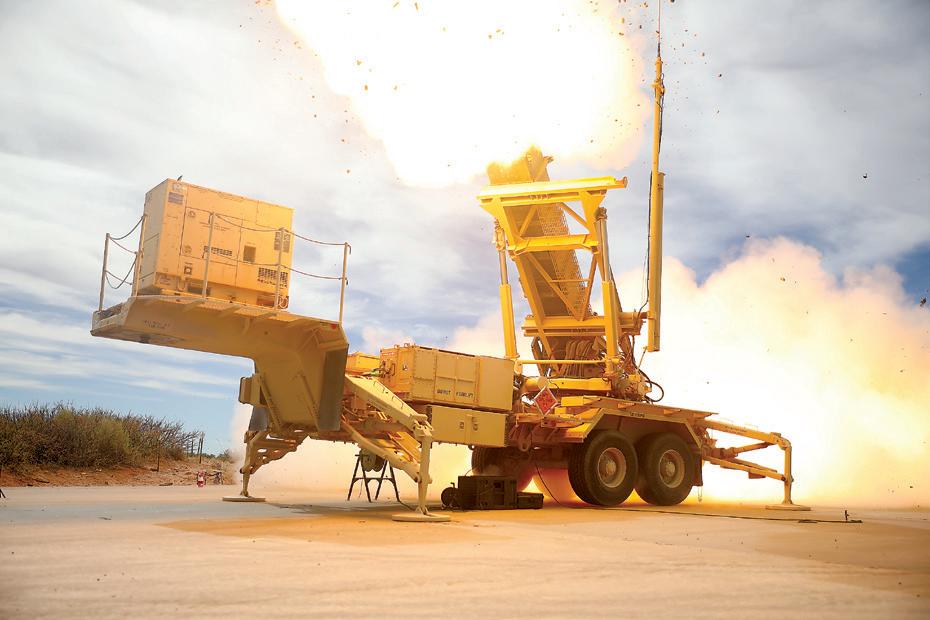TRAVIS TAILWIND




ARLINGTON, Va. (AFNS) — The Department of the Air Force announced the expansion of the Military Parental Leave Program for airmen and guardians via guidance memorandum, which mirrors the Department of Defense’s Directive-type Memorandum 23-001 – “Expansion of the Military Parental Leave Program.”
Effective Dec. 27, 2022, the updated policy authorizes birth parents 12 weeks of parental leave following a provider-recommended period of convalescent leave and non-birth parents 12 weeks of leave following the birth of their child. The policy also grants adoptive parents and eligible foster parents 12 weeks of parental leave.
Previously, birth parents received six weeks of parental leave following their convalescent leave, and non-birth parents received 21 days.
The expansion is in accordance with the National Defense Authorization Act for Fiscal Year 2022. It also builds on the DoD’s support of military families and service members by streamlining and enhancing the parental leave benefit for active and reserve component service members (on active duty for 12 months or more) who give birth, adopt a child or provide long-term foster care.
Members who were on maternity convalescent leave or
caregiver leave on Dec. 27, 2022, before the new policy went into effect, will also receive the ex panded benefit.
Both the birth and non-birth parents can take the leave ad ministered in accordance with the policies and procedures out lined in the Department of the Air Force Guidance Memoran dum. The expansion of the Mil itary Parental Leave Program, which applies to all eligible ser vice members as of Dec. 27, 2022, takes precedence over previous DoD issuances and service reg ulations.
The Department of the Air Force Guidance Memorandum is located at https://static.e-publish ing.af.mil/production/1/af_a1/ publication/dafi36-3003/dafi363003.pdf.
Additional FAQs are located at https://www.af.mil/Portals/1/ documents/2023SAF/FAQs_-_ Department_of_the_Air_Force_ Parental_Leave_-_6_Jan_22.pdf.
EXAMPLE 1. A service member adopted a child on Dec. 27, 2022. This member is eligible to take up to 12 weeks of non-chargeable leave in accordance with DAFGM2023-01 para 3.2.2.10.2.
EXAMPLE 2. A service member designated as the primary caregiver is granted six weeks of maternity convalescent leave following the birth of a child and uses only three of the six weeks as of Dec. 27, 2022. Since the member
will have unused caregiver leave as of Dec. 27, 2022, they would be eligible to transition to the expanded parental leave policy and take up to 12 weeks of non-chargeable leave after convalescent leave ends in accordance with DAFGM2023-01 para 3.2.2.10.2.
EXAMPLE 3. An airman adopted a child Nov. 25, 2022, then started secondary caregiver leave Dec. 15, 2022. Since the airman took leave in a consecutive increment from Dec. 15, 2022, to Dec. 26, 2022 (12 days), the remaining caregiver leave days automatically converted to 72 days on Dec. 27, 2022 (84 days – 12 =
72 days) and can be taken in multiple increments of seven days or more. The member must take the remaining 72 days by Nov. 24, 2023, or forfeit the leave.
EXAMPLE 4. A service member designated as a secondary caregiver uses two of the three weeks of caregiver leave as of Dec. 27, 2022. With the service member having unused caregiver leave as of Dec 27, 2022, they would be eligible to transition to the expanded parental leave policy and take up to 10 weeks of nonchargeable leave, as they previously took two weeks.
EXAMPLE 5. A service member designated as the primary
caregiver uses five of the six weeks of caregiver leave as of Dec. 27, 2022. Since the service member has unused caregiver leave as of Dec. 27, 2022, they would be able to take seven weeks of parental leave, for five weeks were previously taken.
EXAMPLE 6. A service member did not take all of the authorized caregiver leave in one increment. The remaining caregiver leave would not convert to the Military Parental Leave Program because any leave taken under the previous caregiver leave policy could only be taken at one time and was forfeited when the leave period ended; multiple leave events were not authorized.
EXAMPLE 7. A guardian had a child Jan. 15, 2022, but did not take secondary caregiver leave yet. The three weeks of caregiver leave converts to 12 weeks of parental leave on Dec. 27, 2022. however, under the Military Parental Leave Program, members must take parental leave within one year. All unused leave not taken by Jan. 14, 2023, is forfeited.
EXAMPLE 8. A service member fostered a child Dec. 1, 2022. Service members who foster a child prior to Dec. 27, 2022, do not qualify for the expanded parental leave policy because foster care was not eligible for the Military Parental Leave Program under the previous caregiver leave policy.

Serving Travis Air Force Base and the surrounding community 1250 Texas St., Fairfield, Calif. 94533 707-425-4646 | Fax 707-425-5924
Publishers: Foy S. McNaughton and T. Burt McNaughton
Advertising Director: Louis Codone
Distribution: Bob Franks
Editor: Glen Faison
Copy Editor: Todd R. Hansen
Layout : Robinson Kuntz
Photo Editor: Robinson Kuntz
Travis Tailwind is a publication produced by the Daily Republic. All rights reserved. Reproduction in any form, in whole or in part, without written permission, is prohibited. Content published in Travis Tailwind is not necessarily the official view of, nor is it endorsed by, the U.S. government, the Department of Defense or the Department of the Air Force. The appearance of advertising in the publication, including inserts or supplements, does not constitute an endorsement by the Department of Defense, the Department of the Air Force or the Daily Republic of the products or services advertised.

Those off base who wish to receive home delivery of Travis Tailwind may call 707-427-6975. For information on paid advertising, call 707-425-4646. Correspondence may be sent to: Travis Tailwind/Daily Republic, 1250 Texas St., Fairfield, CA 94533.
CONTENTS
8-9 Worship services 10 Classifieds 11 Puzzle
ON THE COVER Airmen assigned to the 18th Security Forces Squadron huddle before a field training exercise at Kadena Air Base, Japan, April 27, 2022. Senior Airman Jessi Monte/U.S. Air Force

• Michele Lotchuang Njopse, 55th Aerial Port Squadron.
The 349th Air Mobility Wing held a Travis recognizes 349th AMW Community College of the Air Force graduates graduation cer emony to recognize members of the wing who completed their re quirements to earn an associate degree through the Community College of the Air Force on Jan. 6 at the Base Theater at Travis Air Force Base.
The Community College of the Air Force concept evolved in the early 1970s as a means for air men to gain recognition for their U.S. Air Force training. Further education provides airmen an opportunity to be better at their jobs within the Air Force and to make them more competitive outside of their military service.
The newest Community College of the Air Force graduates, in no particular order, are:
• Rafael Hernandez, 349th Air Mobility Wing.
• Melquiades Maciel, 349th Aerospace Medicine Squadron.
• Clifford Baker, 349th Aerospace Medicine Squadron.
• Eric Crandell, 349th Aerospace Medicine Squadron.
• Meliza De Leon, 349th Medical Squadron.
• Kyle Christian Lopez, 349th Medical Squadron.
• Challis Fife, 349th Medical Squadron.
• Winecyl Sumagang, 349th Medical Squadron.
• Aurora Escorcia, 349th Medical Squadron.
• Vanessa Tungol, 349th Medical Squadron.
• Dylan Whitmer, 349th Medical Squadron.
• Kelvin Caban Diaz, 349th
Aeromedical Staging Squadron.
• Ma Torres, 349th Aeromedical Staging Squadron.
• Kati Robertson, 349th Force Support Squadron.
• Suchart Soriano, 82nd Aerial Port Squadron.
• Francisco Alamillo, 82nd Aerial Port Squadron.
• Laura Kennedy, 82nd Aerial Port Squadron.
• Andrea Drake, 82nd Aerial Port Squadron.
• Sergio Canchola Jr, 55th Aerial Port Squadron.
• Eric Jackson, 349th Security Forces Squadron.
• Bryan Morris, 349th Security Forces Squadron.
• Angelica Moreno, 349th Security Forces Squadron.
• Jesse Arreola, 349th Security Forces Squadron.
• David Salgado, 349th Security Forces Squadron.
• Javier Olivera, 349th Security Forces Squadron.
• Ryan Anchinges, 349th Maintenance Group.
• Stephanie Pitts, 349th Maintenance Group.
• Matthew Dyer, 349th Aircraft Maintenance Squadron.
• Gregory Barlow, 349th Aircraft Maintenance Squadron.
• Taylor Leacox, 349th Aircraft Maintenance Squadron.
• Ashley Walsh, 349th Aircraft Maintenance Squadron.
• Lukas Jochem, 349th Aircraft Maintenance Squadron.
• Raunak Manandhar, 349th Aircraft Maintenance Squadron.
• Michael Smith, 945th Aircraft Maintenance Squadron.
• Christian Banes, 749th Aircraft Maintenance Squadron.
• Andrew Zamudio, 749th Aircraft Maintenance Squadron.
• Cartier Joy Cupino, 749th Aircraft Maintenance Squadron.
• Mark Valenzuela, 349th Maintenance Squadron.
• Jeffrey Jacobs, 349th Maintenance Squadron.
• Mark Short, 70th Air Refueling Squadron.
• Oscar Sanchez, 79th Air Refueling Squadron.
• Caleb Anderson, 79th Air Refueling Squadron.
• Milan Gonos, 312th Airlift Squadron.
• Monique Butler, 312th Airlift Squadron.
• Daniel Massingill, 312th Airlift Squadron.
• Vilma Young, 301st Airlift Squadron.
• Michael Brown, 301st Airlift Squadron.
• Sebastian Romero, 312th Airlift Squadron.
• Baltazar Celzo, 349th Force Support Squadron.
• Dallan Livingston, 349th Mission Support Group.
• Sarah Pelaez, 349th Mission Support Group.

• Jasannette Parham, 349th Mission Support Group.

• Cherry Gomez, 349th Civil Engineer Squadron.
• Francisco Marquez Velasco, 349th Civil Engineer Squadron.
Master Sgt. Jose Aquilizan 349 AMW
The Department of Defense is modernizing its approach for developing medical countermeasures to protect warfighters from novel biological agents
This is made clear in a new document, “Approach for Research, Development and Acquisition of


Medical Countermeasures and Test Products,” which was recently published by the Office of the Deputy Assistant Secretary of Defense for Chemical and Biological Defense. This office oversees the Department of Defense’s Chemical and Biological Defense Program, the mission of which is to anticipate future threats and





deliver capabilities that enable the Joint Force to fight and win in chemical- and biological-contested environments.
The Chemical and Biological Defense Program has always prioritized medical countermeasures, which consist of vaccines, medical tests and drugs.
“No matter how good our boots, suits, gloves and masks perform,
there’s always going to be the risk that our warfighters don’t necessarily have their equipment on when they need it. So having medical countermeasures as an added layer for protection makes sense,” Dr. Kevin Wingerd, the Chemical and Biological Defense Program’s medical director, said. What has changed is the nature of the threat.

“The convergence of different sciences and technologies is transforming the biological threat landscape,” Wingerd said. “In particular, it has created a nearly limitless number of potential threats we must defend against.”
This contrasts to the past, when DoD developed medical

ARLINGTON, Va. (AFNS) —
The Department of the Air Force will promote and cultivate a mentoring culture to show airmen and guardians how mentoring can help maximize their full potential in January 2023 following President Joe Biden’s proclamation on Dec. 30, 2022. The theme this year is: “Love your mentoring journey.”
The Department of the Air Force values mentorship as an enterprise imperative and is committed to increasing deliberate mentoring for our Total Force airmen and guardians.
“Love your mentoring journey” means to enjoy the process it takes to form a mutually beneficial mentoring relationship and achieve desired goals. Every airmen and guardian is unique, and their mentoring journey should be tailored to meet the needs of their specific journey.
Mentoring is a relationship in which knowledge and skills are shared between members in a way where everyone benefits. Often a more senior person is mentoring a junior person, but mentorship can happen between any two individuals. Mentoring will help airmen and guardians discover their strengths by achieving their full potential through a structured, trusting mentoring relationship.
As part of National Mentoring Month, the Department of the Air Force will host a series of virtual, live events focused on educating airmen and guardians on key aspects that influence their mentoring journey, the importance of mentoring, and how to register on the myVector Mentoring platform.

Listed below are two of the upcoming virtual events scheduled for National Mentoring Month:

Jan. 18 at 6 to 7 p.m. EST: AF Blue Lab – Mentoring in a Digital





Era (https://m.facebook.com/ AFBlueLab/?mibextid=LQQJ4d) (Facebook)
Air Force Blue labs and key Air Force tech leaders will be discussing the impact that digitization and technology has had on mentoring. Technology has changed the world forever and with that comes a new era of how we see mentoring. Leveraging technology to enhance the mentoring experience will allow the Air Force to connect more than ever and open the door to more effective mentoring relationships across generations. With things such as social media, virtual collaborations applications, and digital tools that enhance our learning capabilities, we must understand how to leverage this digital environment to enhance our mentoring relationships and journey.
Jan. 23 at 7 to 9 p.m. EST: Crucial Conversation – Mentoring impact on Diversity and Inclusion (https://www.facebook. com/groups/509141773753762/? ref=share&mibextid=zoDNOU) (Facebook)
Crucial Conversation is a private social media page that often addresses tough conversation topics from a leadership perspective. They are hosting a virtual panel to discuss the impact that mentoring has on diversity and inclusion. As mentors, we must understand how to connect with and develop diverse airmen and guardians to help them reach their highest potential. As mentees, we must help our mentors understand our uniqueness so we can form a stronger mentoring relationship. Our force’s diversity is one of our most powerful weapons and mentoring is a key part of unlocking the potential of each airman and guardian from all walks of life as they embark on their mentoring journey.
THE DAILY REPUBLIC DELIVERS. CALL 427-6989.











Weeks after announcing that the U.S. would send one Patriot air defense battery and associated munitions to Ukraine, a Pentagon official said Ukrainian soldiers will come to the U.S. to train on the Patriot system so they’ll be ready to use it when it’s delivered.
“Training for Ukrainian forces on the Patriot air defense system will begin as soon as next week at Fort Sill, Oklahoma,” Pentagon Press Secretary Air Force Brig. Gen. Pat Ryder said Jan. 10. “The training will prepare approximately 90 to 100 Ukrainian soldiers to operate, maintain and sustain the defensive system over a training course expected to last several months.”
In the past few months, the Russians have increased their aerial bombardment of Ukraine, Ryder said, and the Patriot will help the Ukrainians stand up to that assault.
“The Patriot will contribute to the air defense capabilities that


Ukraine already has,” he said. “It’s something that will enable them to take down . . . ballistic missiles, adversary aircraft; [it’s] really up to them on how they employ it. But this is part of a broader effort by the United States and the international community to provide Ukraine with the air defense capabilities that it needs to defend its population and its armed forces.”
Fort Sill is home to the schoolhouse where the Army trains its soldiers and service members from allied and partner nations on using the Patriot system. Now, Ukrainian soldiers will train there, as well.
Ryder said training for those Ukrainian soldiers will include classroom work, hands-on training with the Patriot systems, as well as a simulation lab. It will also focus on what the Ukrainians will need once they are back home. “The training will be tailored to provide relevant tactics, techniques and procedures based on the battlefield conditions in Ukraine to enable them
to employ that to maximum effect once they are back in Ukraine,” Ryder said.
Since Russia’s invasion on Feb. 24, 2022, the United States has provided Ukraine with more than $24.2 billion in security assistance. That assistance has included ammunition, vehicles, aircraft, unmanned aerial vehicles, radar systems, small arms, artillery, air defense systems, antiaircraft and anti-armor systems.
Soldiers from 69th Air Defense Artillery Brigade conducted Patriot Missile live fire training, November 5, at McGregor Range Complex on Fort Bliss.

ARLINGTON, Va. (AFNS) —

The Department of the Air Force is establishing new Body Composition Program standards for Airmen and Guardians after the abdominal circumference was removed from the Air Force-specific Physical Fitness Assessment in 2020.
Both the Air and Space Forces released the new Waist-toHeight Ratio Body Composition Program policy in January, with assessments to begin April 2023.
The Body Composition Assessment is a separate and distinct measurement that is not part of the Department of the Air Force Physical Fitness Assessment.

WHtR measures excess fat distribution in the abdominal region and is calculated by dividing waist circumference by height. Excess fat distribution in
the abdominal region is associated with increased health risk.
“The goal of the new program is to empower Airmen to take charge of their health and fitness through lifestyle enhancement to optimize readiness,” said Lt. Gen. Caroline Miller, deputy chief of staff for Manpower, Personnel and Services. “Regardless of which risk category they fall in, everyone is encouraged to take advantage of the resources available to improve or maintain a healthy body composition.”
Body composition serves as an indicator of a member’s overall health and physical readiness. Department of Defense Instruction 1308.03, DoD Physical Fitness/Body Composition Program, mandates the Body Composition Program as a requirement. Excess fat in the abdominal region impairs the body’s responsiveness to insulin. As a result, it contributes to increased health risks
such as cardiovascular diseases, stroke, diabetes, hypertension and musculoskeletal injuries, negatively impacting physical readiness.
The Department of the Air Force Body Composition Program defines the waist as the midpoint between the lowest rib and the top of the hip bone, which is normally the narrowest portion of the abdomen. WHtR is expressed in the following risk categories and associated standards:
• Meeting Standard (LowModerate Risk): (WHtR < 0.55)
• Not Meeting Standard (High Risk): (WHtR > 0.55)
Airmen and guardians will maintain a WHtR of < 0.55 to meet the Body Composition Program
standards. Airmen will complete their assessments annually around their birth month, while guardians will complete it within their birth quarter.
There are no mandatory actions for airmen and guardians meeting the Body Composition Program standards, however, members will have their WHtR reviewed during their annual medical Periodic Health Assessment. They will receive education or a referral based on their risk category and other health concerns if indicated.

Airmen and guardians identified as not meeting the Body Composition Program standards will be enrolled into an informal, self-directed Body
Composition Improvement Program for 12 months and referred to their medical treatment facility for a medical evaluation and assessment for additional risk factors.

Guardians will also be referred to Guardian Resilience Teams as they are established.
Guardian Resilience Teams will be comprised of human performance subject matter experts with different specialties who can provide a broad range of care for guardians, including preventive care, performance optimization, skill-building, mental health care and spiritual assistance.


Above all, our priority is to


Bible Study Tuesdays at 12 noon (virtual) Suisun Campus 601 Whispering Bay Lane, Suisun City, CA 94585 707-425-1849 www.mcbcfs.org for more information Live Stream on:




1050 North Texas Street
Fair eld, CA 94533-0624 707-425-3138 www.holyspiritfair eld.org


Weekend Mass: Saturday • 5:00 pm & 7:00 pm (Spanish) Sunday • 6:00am (Spanish), 7:30, 9:00, 10:30am, 12:00pm, 2:00pm (Spanish), 7:00pm (Spanish)
Daily: M-F • 7:00am & 9:00am Saturday • 9:00am; Tues & Fri • 7:00pm (Spanish); Wed • 7:00pm (English) OLPH Confessions in English: Saturday • 3:00-4:30pm Spanish: Tues & Fri • 4:00pm-6:00pm

CHURCH of CHRIST Meets at Rockville Cemetery
Stone Chapel
4221 Suisun Valley Rd, Fairfield
9:00 a.m. Sunday Morning Bible Study
9:50 a.m. Sunday Morning Worship
5:30 p.m. Sunday Evening Bible Study
7:00 p.m. Wednesday Evening Bible Study We welcome and encourage you to come and hear the good news of the gospel of Christ, and to learn about eternal salvation for all mankind that is offered through Jesus.



“And there is salvation in no one else; for there is no other name under heaven that has been given among men by which we must be saved.” Acts 4:12

Bring a heart and mind willing to hear God’s Word and to do His great will... For more information or directions, please visit our website at www.rockvillecofc.com

From


Next week, Ryder said, Secretary of Defense Lloyd J. Austin III and Chairman of the Joint Chiefs of Staff Army Gen. Mark A. Milley will travel to Germany to host another meeting of the Ukraine contact group of international defense chiefs. Ryder said the group has helped identify, synchronize and ensure delivery of the capabilities the Ukrainians have needed to defend against Russian aggression.
“The secretary looks forward to meeting with defense leaders from the approximately 50 nations [comprising] this important group dedicated to Ukraine self-defense,” he said.

From Page 7
shift our guardians’ mindset with regards to their health,” said Katharine Kelley, deputy chief of Space Operations for Human Capital. “We hope the new body composition program and associated holistic health educational resources will inspire our members to move away from an episodic fitness mentality to putting their health first every day.”
A collaborative and supportive

approach will be used to assist airmen and guardians through providing tools, resources, and a tailored action plan to aid in making positive changes toward better health. Airmen and guardians not meeting the Body Composition Program standard will reassess every 12 months at the next scheduled Body Composition Assessment or until they meet the Body Composition Program standard.
The initial results from WHtR are non-punitive during the 12-month informal self-directed Body Composition Improvement Program.
Failing to test on time, not scheduling or missing an appointment with the Military Treatment Facility team or becoming non-current may be cause for commander-driven administrative actions.

High risk results after the 12-month informal self-directed phase will be considered a failure to meet standards and will require enrollment in a formal self-directed Body Composition Improvement Program that may result in consideration for administrative action, including separation for continued failures.













Army & Air Force Exchange Service Public Affairs
































































TRAVIS AIR FORCE BASE — Travis shoppers have a chance to catch every tackle, touchdown and toe-tapping catch of the big game on a brand-new big-screen TV thanks to the Army & Air Force Exchange Service’s worldwide Mars sweepstakes.


Through Feb. 3, authorized Travis Air Force Base Exchange









shoppers can enter at ShopMyExchange.com/sweepstakes for a chance to win one of three bigscreen TVs. Each prize will be awarded as a $1,500 Exchange gift card.













“Whether enjoying your favorite shows, streaming movies or cheering on your team, it’s more fun on a big-screen TV,” Travis Exchange General Manager Phonda Bishop said in a press release. “Three lucky winners will get the chance to unwind with these great prizes.”
No purchase is necessary to enter or win. Honorably discharged veterans and Department of Defense civilians and retirees are also eligible to enter.
















countermeasures against a defined list of specific threats, typically ones adversaries had already weaponized. But this “one bug, one drug” approach isn’t viable in the face of the exponentially larger number of potential threats, including novel ones.
Nor is the Department solely focused on deliberate biological threats. In his Biodefense Vision Memo published in November 2021, Secretary of Defense Lloyd J. Austin III directed the Department to be postured against agents that are naturally occurring as well as those that may have been released accidentally, alongside traditional deliberate ones. The new medical countermeasures approach provides a roadmap to address this more challenging problem set.
According to the document, nonspecific medical
countermeasures will enable warfighters to remain on the battlefield after being exposed to an agent. After that agent has been identified, rapid development of medical countermeasures that eliminate the specific threat will be given to all warfighters, including those newly entering the battle.
Nonspecific medical countermeasures are broadspectrum acting and are designed to target a set of similar agents, diseases or symptoms. Nonspecific medical countermeasures are particularly vital for novel agents that have no medical countermeasures. Administrating nonspecific medical countermeasures could alleviate symptoms, slow down disease progression and reduce transmission of the agent, allowing troops to remain in the battle with little impairment. While the agent may be suppressed for a given period, a medical countermeasure
that targets and eliminates the novel agent is still required.
As Wingerd puts it, “Using nonspecific medical countermeasures allows the agent’s effects to be mitigated and the warfighter to remain operational and combat ready, while simultaneously allowing for rapid development of specific medical countermeasures that can be used to completely get rid of the agent and

protect incoming warfighters.”
To rapidly develop narrow-spectrum medical countermeasures, the Chemical and Biological Defense Program will leverage cutting edge technology including artificial intelligence and machine learning and establish partnerships with known pharmaceutical manufacturers. The Chemical and Biological Defense Program considers manufacturing capacity a strategic challenge, which the new approach addresses as a goal.
“In a response preparedness posture, we need to invest in unique medical infrastructure designed to rapidly produce new vaccines and drugs, and leverage existing medical infrastructure by adapting them to target new agents quickly,” Wingerd said.
“What Covid has certainly taught us is that if that industrial base isn’t present, it doesn’t matter

how good your ideas are, they’re just not going to go anywhere,” he said, mentioning that partnerships with the interagency, academia and U.S. allies and partners are also critical.
Besides the U.S. Food and Drug Administration, which is the regulating agency for medical countermeasures, Wingerd mentioned the Biomedical Advanced Research and Development Authority and the White House Office of Science and Technology Policy as key Chemical and Biological Defense Program interagency partners. Pointing to the recently updated National Biodefense Strategy, Wingerd said, “This effort is really a whole of government approach, and the CBDP’s new approach aligns with and supports the NBS.”
He said he expects new advances in medical countermeasures to bear fruit beginning as early as next year, with more to follow.